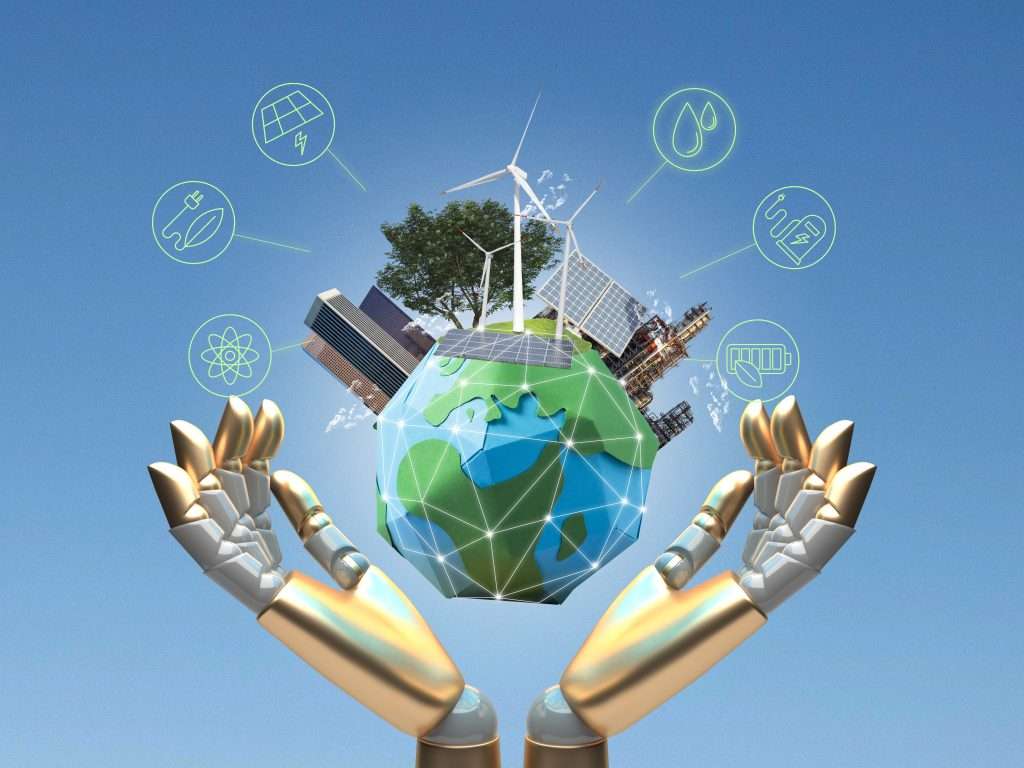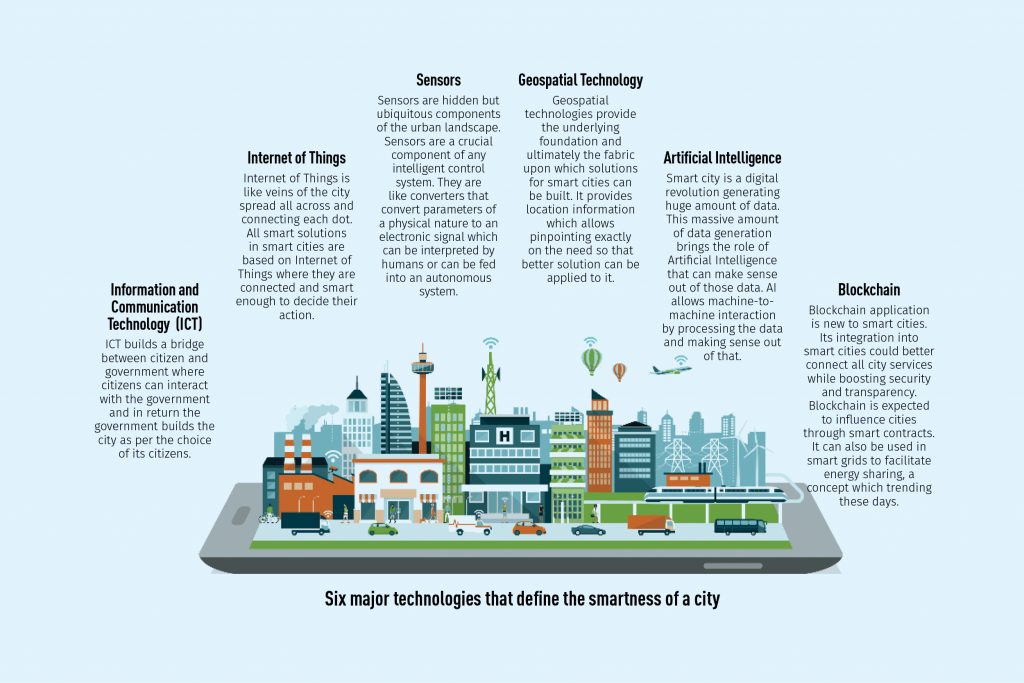
Source: Freepik
The necessity of technology in our everyday lives is undeniable. It is so intertwined in our daily activities that most people will struggle to function without it. A lot of tasks involve the use of electrical devices and technologies, such as smartphones and computers. In fact, we use technology for everything from entertainment to communication to mobility. Technology has been woven into the fabric of society and has influenced its character in many ways.
What is technology?
“Technology is the application of scientific knowledge to the practical aims of human life or, as it is sometimes phrased, to the change and manipulation of the human environment.”
Encyclopedia Britannica (2023)
By definition, technology facilitates change and transformation. Therefore, technology is a necessity for solving problems and improving lives. It shapes our future. Hence, it is worth asking: how do we ensure that technology plays a strategic role in shaping a good society for our future?
How Technology Influences Our Society
One study provides a framework for determining how much technology improves society. The author argues that technology, which is itself shaped by society, has a direct impact on how people behave. It impacts how social roles are established and how culture is expressed. It is non-deterministic, however, but rather influenced by social and material contexts.
Different strategies can be used to ensure that technology creates a favourable outcome. First, moral and political decisions should be made during the design and development phase. This adopts a stakeholder-centric approach. Another strategy is known as values in design or value sensitive design. In this approach, designers explicitly consider values (especially common goods) as design requirements.
The study cautions against two extreme viewpoints—those of technological neutrality and technological determinism. In the neutral view, technological products are inherently neutral; their consequences are only determined by how they are used. However, this is only true for simple and multi-purpose tools. Most technologies are complex and designed for a specific function. On the other hand, technological determinism holds that technology produces specific social outcomes regardless of its use (Brey, 2018). This can be easily refuted because a product’s social impacts are always influenced by the context in which it is used.
the role of technology in sustainable development
There are several emerging technologies that can help drive growth towards sustainable development. For instance, we rely on technologies to ensure that people get access to clean water and clean, affordable energy. They can help reduce toxicity, adapt to climate change, manage natural resources effectively, and build capacity for public awareness (Environmental Law Institute, n.d.). This then helps create a healthier and cleaner environment. Sustainable technological developments focus on reducing atmospheric carbon dioxide (CO2) emissions and environmental pollution. It will be necessary to modify industrial processes, resources used, as well as manufactured goods to achieve sustainable economic growth (National Academies of Sciences, 1995). More recently, artificial intelligence (AI) has played an increasing role in enhancing our lives, potentially contributing to a more sustainable world.

Source: Geospatial World
Information and Communication Technologies
Information and communication technology (ICT) is defined as “a diverse set of technological tools and resources used to transmit, store, create, share, or exchange information” (UNESCO Institute for Statistics, 2009). ICTs can have positive and negative effects on the environment. The production of devices, energy use, and waste recycling contributes to CO2 emissions. On the other hand, ICT develops smarter cities, transportation networks, electrical grids, and industrial processes. This provides significant energy savings. A study examined the relationship between ICTs and CO2 emissions on a global scale and found an inverted U-shaped relationship (Higón et al., 2017). This is based on data from 142 economies from 1995 to 2010. This indicates that, whereas ICT initially causes CO2 emissions, it eventually contributes to their decline. Data also shows that many developed nations have already reached a stage where ICT advances lead to a reduction in emissions.
Material Science
Material research is transforming traditional materials like steel, concrete, and plastic, reducing their environmental impact. Low-carbon concrete, made by replacing cement with industrial waste products, can reduce the carbon footprint by up to 30%. Recycled steel, a popular construction material, can reduce carbon emissions by up to 58%. Timber, a renewable resource, offers a low-carbon alternative and can store carbon over its lifetime.
In industries such as packaging and textiles, sustainable alternatives are developed to reduce waste and help transform our economy from linear to circular. Biodegradable plastics, for instance, made from renewable resources like corn starch or vegetable oil, can reduce plastic waste. Mushroom packaging, made from agricultural waste and mycelium, is compostable and biodegradable. Recycled polyester, made from post-consumer plastic waste, reduces plastic waste in landfills. Organic cotton farming uses natural fertilisers and pest control methods, avoiding negative environmental impacts from conventional farming methods.
Food and Water
Technology can significantly contribute to the sustainability of food and water systems by reducing waste and increasing efficiency. One example is precision agriculture, which uses sensors and monitors to enhance operations and increase yield. Other technologies in agriculture are vertical farming, which reduces the amount of land and water resources to enable crops to grow indoors (Lu, 2022); drip irrigation, which minimises water use in arid regions and reduces greenhouse gas emissions; and solar irrigation for managing water in agricultural settings where incident solar radiation is significant.
An approach called the Food-Energy-Water (FEW) Nexus recognises the interconnection of the food, energy, and water systems to support global food security and sustainable agriculture. Recently, numerous nations and organisations, such as the Food and Agriculture Organisation of the United Nations (FAO), have adopted it as a guiding principle for their policies and programs.
Public Infrastructure
Electric vehicles are becoming increasingly popular in public transportation and commercial fleets. In China, 300,000 electric buses operate daily. Despite higher acquisition costs, electric buses have a lower total cost of ownership due to their independence from diesel and the elimination of air pollutants. Commercial fleets are expected to follow suit. Battery-electric commercial vehicles (BECVs) are predicted to surpass car EV sales in some markets by 2030 (McKinsey, 2019).
Energy

Source: Freepik
Renewable energy sources are rapidly growing and will play a crucial role in tackling climate change. To reduce CO2 emissions and air pollution, the world needs to shift towards low-carbon sources like nuclear and renewable technologies. By switching to wind, water, and solar, we could eliminate at least 5 million deaths from air pollution annually, slowing and reversing global warming effects and stabilising the global energy sector. Solar and wind energy are now significantly less expensive to produce than new fossil fuel-burning power facilities, according to recent studies. Last year, there was a remarkable 80% growth in the global power demand for wind and solar generation.
Emerging Technologies
Findings from a study of emerging sustainable technologies highlight the following technologies as those with promising growth and development: offshore wind turbines, carbon capture storage and utilisation, sustainable ammonia production, and cellular agriculture.
moving forward
To accelerate the shift to a sustainable global society, policymakers should be deliberate about funding research and development in these areas, especially for projects with long-term positive impacts. Investing in R&D can help identify innovative solutions to address various environmental, social, and economic challenges. Businesses should incorporate sustainability into their operations throughout their supply chain and collaborate with stakeholders.
Consumers also play a crucial role in sustainable technology development. Whenever possible, we should choose sustainable products and materials, reduce energy consumption, support companies that prioritise sustainability, and advocate for sustainability.
Why is it essential that we focus on the Ways in Which Technology Is a Necessity?
Technology is a double-edged sword, contributing to social and environmental issues while also offering solutions to urgent global issues like waste management, food scarcity, environmental degradation, and climate change. According to the United Nations Environment Programme (UNEP), technology is essential for overcoming these obstacles, and we must harness the digital revolution to advance environmental sustainability by combining high- and low-tech solutions.
Indeed, technology is a necessity for sustainability as it can be a solution to urgent environmental issues while also allowing for innovation and teamwork. Technology must engage and empower governments, businesses, and citizens to adopt sustainable practices and policies.
achieving the United Nations Sustainable Development Goals (SDGs) and how they link to the Ways in Which Technology Is a Necessity
The United Nations Conference on Sustainable Development (Rio+20) emphasised the need for affordable technological solutions to eradicate poverty and reorient development trajectories from 2015 to 2030. The UN Sustainable Development Goals (SDGs) are 17 goals adopted in 2015 to end poverty, protect the planet, and ensure peace and prosperity. Because of the interconnectedness of the SDGs, development must strike a balance between social, economic, and environmental sustainability. SDG 17 targets include the development and implementation of technology to support capacity-building in developing countries. Technology is crucial for achieving the SDGs by addressing environmental problems, enabling innovation, and promoting a circular economy.
A Thrivable Framework
THRIVE Project invests in research activities and advocates for solutions to issues fundamental to the integrity of our society, including how technology impacts our social and environmental well-being. In many ways, technology can be a major catalyst for sustainability efforts by enabling solutions that also have a positive impact on net zero and other environmental, social, and governance goals.
THRIVE Framework uses machine learning and predictive assessments to assist environmental and social sustainability transitions. We understand that human happiness might occasionally compete with environmental health, so our THRIVE Platform uses a ciambella chart to visually represent the “thrivable zone.”
To learn more, dive into our blog and podcast series, and don’t miss our free live webinars featuring expert guests who shed light on sustainability. Sign up for our newsletter to stay informed.

















